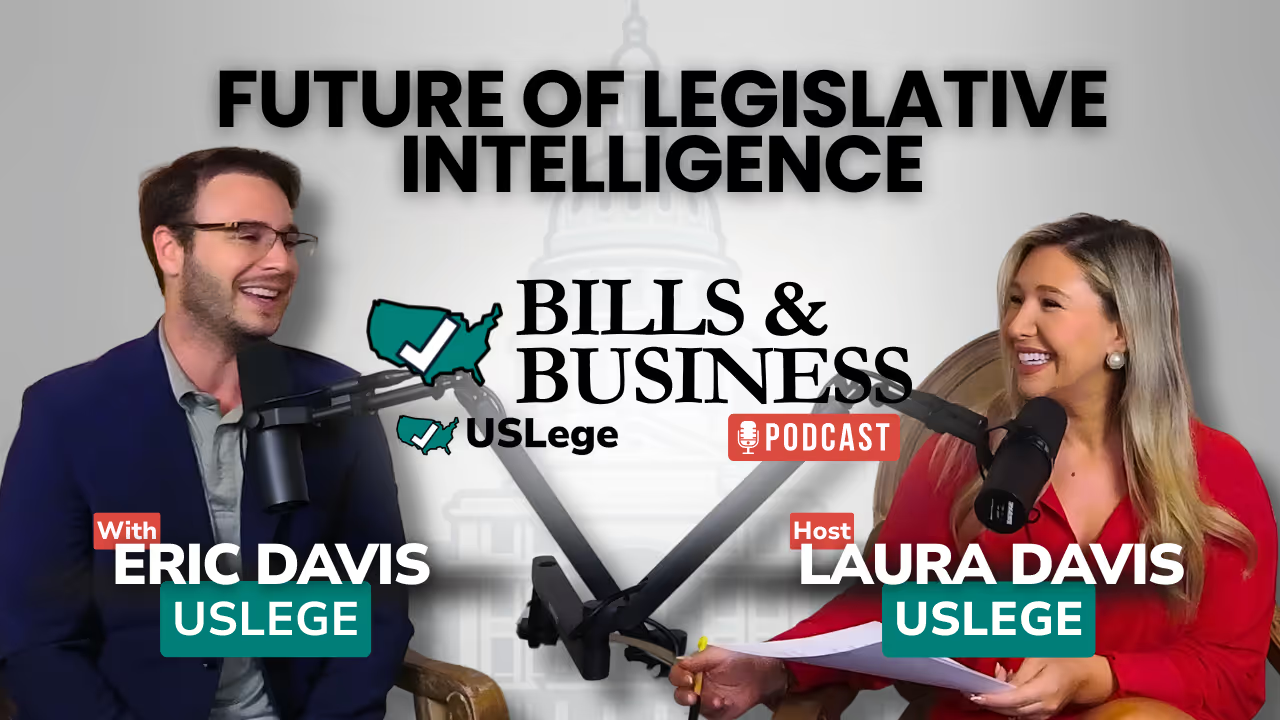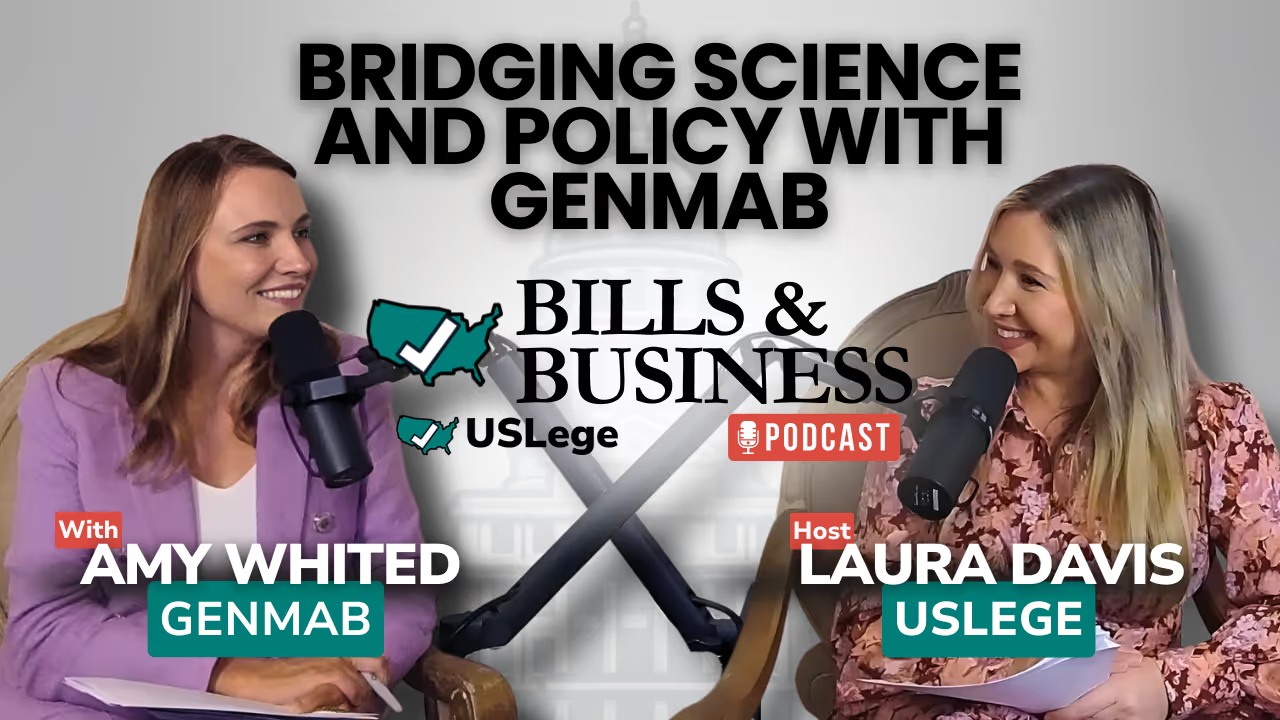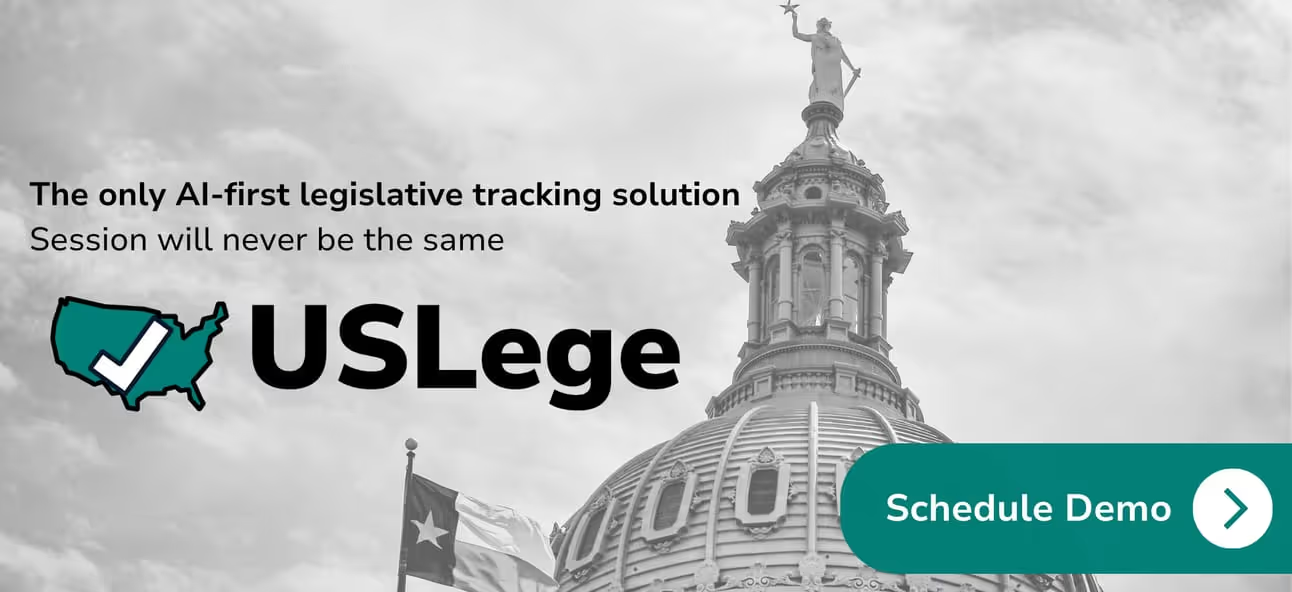
Texas lawmakers are once again debating whether to end the twice-a-year time change, with competing proposals to adopt either permanent daylight saving or standard time. With public opinion divided and potential health and safety risks linked to the current system, could this be the year Texas finally makes a change?
Today’s Insights:
- Clock Controversy: Will Texas End Seasonal Time Shifts?
- Dallas Fed: Texas Job Growth Eases, but Key Sectors Stay Resilient
- The AI War Continues Between Musk and Altman
Clock Controversy: Will Texas End Seasonal Time Shifts?
Texas lawmakers are renewing efforts to end the long-standing practice of changing clocks twice a year. Several bills have been introduced in the House and Senate, with most aiming to keep daylight saving time year-round. However, Sen. Judith Zaffirini has proposed an alternative approach, advocating for permanent standard time, which is currently the only option allowed under federal law. If her bill passes and Congress later permits year-round daylight saving time, Texas voters would get to decide their preferred option. Proponents argue that time changes are disruptive, leading to negative health effects, increased traffic accidents, and decreased productivity.
Previous attempts to end time changes in Texas, such as Rep. Will Metcalf’s 2023 bill, gained bipartisan support but ultimately failed in the Senate. Metcalf has reintroduced his bill this session, emphasizing that Texas should take action rather than wait for federal approval. Meanwhile, at the national level, the Sunshine Protection Act, which would make daylight saving time permanent, has been reintroduced by U.S. Senators Patty Murray and Rick Scott. A similar bill passed the U.S. Senate in 2022 but stalled in the House. Former President Donald Trump has also voiced support for ending time changes, though he favored eliminating daylight saving time rather than standard time.
Public opinion remains divided, with more Americans supporting the elimination of time changes than keeping the current system. Sleep experts argue that permanent standard time is healthier because it aligns with the body's natural circadian rhythms, reducing risks associated with disrupted sleep patterns. Others, such as Texas A&M professor David J. Earnest, believe that consistency is the most important factor, regardless of which time standard is adopted. Research has linked time changes to an increased risk of heart attacks, strokes, mood disturbances, and traffic accidents. With debate once again rising around daylight saving time, Texas lawmakers may be able to move forward on not moving (the clock) forward ever again.
Dallas Fed: Texas Job Growth Eases, but Key Sectors Stay Resilient
Texas is set to experience slower job growth in 2024 after years of rapid expansion, according to the Federal Reserve Bank of Dallas. The state is projected to add nearly 284,000 jobs this year, a 2% increase that aligns with pre-pandemic trends. While this marks a slowdown from the 427,000 jobs added in 2022, Texas continues to outpace much of the country in employment growth, ranking fifth in total jobs added last year. Every metropolitan area in the state saw economic expansion, though the tech sector struggled with job losses due to widespread layoffs.
Despite the cooling job market, Texas’ economy remains strong in key areas. The oil and gas industry has surpassed pre-pandemic production levels, and home construction remains steady, even as high interest rates impact affordability. However, there are signs of economic headwinds, inflation ticked up toward the end of 2023, and consumer spending has slowed. Additionally, Texas’ office market faces challenges, with high vacancy rates in major metros creating uncertainty in commercial real estate. While growth may be leveling off, Texas’ economic resilience continues to be a defining factor in its long-term outlook.
The AI War Continues Between Musk and Altman
Elon Musk’s $97.4 billion bid to acquire OpenAI’s controlling nonprofit marks another dramatic chapter in the long-running rivalry between Musk and OpenAI CEO Sam Altman. This high-stakes maneuver comes amid OpenAI’s own $40 billion fundraising round, led by Japanese giant SoftBank, valuing the artificial intelligence powerhouse at $300 billion. With investors like Vy Capital, Xai, and Hollywood mogul Ari Emanuel backing Musk’s bid, the offer underscores a broader power struggle in the rapidly evolving AI industry. Musk, a co-founder of OpenAI who left after a leadership dispute, has since launched his own AI company, setting the stage for direct competition with Altman. The tension between the two executives played out publicly on social media, with Altman cheekily rejecting Musk’s offer and proposing instead to buy Twitter for $9.74 billion—prompting Musk to fire back with a one-word response: “Swindler.”
This latest move has significant implications for Texas, a state rapidly emerging as a major hub for artificial intelligence and high-tech industries. Musk’s deep ties to Texas—where Tesla’s headquarters, SpaceX’s Starbase, and The Boring Company are all based position the Lone Star State as a key battleground in the AI wars. If Musk’s bid were successful, it could potentially bring more AI innovation, research, and investment to Texas, further cementing its status as a tech powerhouse. Even if the acquisition fails, Musk’s ongoing AI ambitions suggest that Texas, with its business-friendly policies and growing tech ecosystem, will remain a critical player in the future of artificial intelligence development.
We hope you enjoyed today’s read!
🎙️We Have a Podcast! 🎙️
Bills and Business is your go-to podcast for conversations related to Texas legislation and business. Hosted by Laura Carr, Co-Founder of USLege—an AI-driven legislative tracking software—we bring you in-depth analysis on economic trends, impactful legislation, and key developments shaping Texas business.
Subscribe on Youtube and Spotify for weekly episodes!

- 01 First
Subscribe to our Newsletter

Read more news

How to Choose the Best Legislative Tracking Software for Your Organization
In today’s fast-paced policy environment, staying informed is a constant challenge. Bills, hearings, and regulatory updates move quickly across jurisdictions, creating risks for organizations that rely on timely information, including the risk of missing important information when relying on manual processes. Choosing the best legislative tracking software is one of the most effective ways to manage legislative and regulatory tracking efficiently, minimize missed opportunities, and strengthen decision-making.
This article walks you through how to evaluate legislative and regulatory tools, compare coverage and capabilities, and understand which features help government affairs professionals and public affairs teams stay informed and a step ahead of rapid change. You’ll learn how to assess software platforms, review vendor performance, and apply a clear framework to guide your organization’s choice.
If you’re exploring modern solutions for policy monitoring, visit the best legislative tracking software to see how advanced systems help professionals track activity and analyze critical information across multiple jurisdictions.
Why Legislative Tracking Software Matters
Every legislative session brings thousands of new bills and hearings across the federal government, state legislatures, and local governments. For government affairs teams and law firms that must monitor state legislation or track regulations, the pace of change can be overwhelming.
Without digital platforms, staff may spend hours each day manually searching databases, reading committee reports, and updating spreadsheets. That process isn’t just inefficient—it’s risky. Missing one act or amendment could affect compliance, advocacy strategy, or even public reputation. Relying on manual tracking increases the chance of overlooking important details in legislative information, which can lead to missing critical updates or changes.
The Challenge of Volume and Velocity
- Legislative and regulatory tracking spans bills, hearings, amendments, and regulations that appear daily.
- Strategic decisions depend on access to verified data and real-time alerts.
- Regulatory developments from government agencies can impact clients and advocacy groups instantly.
The Payoff
Automated tracking saves time, reduces human error, and delivers actionable insights faster. Teams can filter results, share updates, and focus their attention where it matters most—on influencing policy and shaping outcomes.
Key Features and Capabilities to Look For
Choosing the right tracking platform starts with understanding what differentiates effective tools from simple alert systems. Below are core features to evaluate before purchasing or implementing any solution.
Coverage Across Jurisdictions
The best systems provide a broad jurisdictional reach—from federal legislation to state legislative hearings and local government acts. Before committing, confirm whether the platform includes:
- Federal and state legislation: Bills, amendments, regulations, hearings, and newly introduced bills, with Congress as a key source for federal legislative tracking.
- Regulatory activity: Notices from agencies and committees.
- Comprehensive data sources: Congressional records, local archives, and state portals.
Understanding the dynamic nature of Capitol Hill is crucial, as legislative activity and staff turnover at the federal level can significantly impact advocacy strategies and tracking efforts.
If your team must monitor state legislation, check that the vendor’s coverage includes smaller states and municipalities that frequently pass niche regulations.
Real Time Alerts and Notifications
Fast updates are critical for professionals who manage compliance or advocacy campaigns. Strong systems offer:
- Instant email alerts for bill introductions, amendments, or new hearings.
- Custom filters for topics, sponsors, committees, or jurisdictions.
- Real-time dashboards showing where legislation is moving next.
- Collaboration tools so teams can assign follow-up actions or comments.
With real-time alerts, government affairs professionals and policy experts can respond before deadlines pass—ensuring that organizations stay ahead and fully informed.
Analytics, Reporting, and Insight Generation
Good tracking isn’t just about collecting raw data. It’s about turning that data into useful analysis. A well-built platform helps users:
- Create trend dashboards showing activity by topic, legislator, or region.
- Generate reports to brief clients, executives, or advocacy groups.
- Use artificial intelligence to compare bills, predict movement, or analyze outcomes.
- Access historical data for longitudinal analysis.
By combining analytics with visualization tools, organizations gain the context needed to make strategic decisions quickly.
Artificial Intelligence in Legislative Tracking
Artificial intelligence transforms how government affairs professionals and government relations teams approach legislative tracking. By harnessing AI, organizations can analyze massive volumes of legislative and regulatory data in real time, ensuring that no critical bill or regulation goes unnoticed. AI-powered tools can automatically identify and prioritize bills that align with an organization’s advocacy goals, generate personalized bill summaries, and even predict the likelihood of legislative movement—all with minimal manual intervention.
For government relations professionals, this means less time spent sifting through raw data and more time focusing on strategy, stakeholder engagement, and influencing policy outcomes. AI-driven platforms can scan every legislative chamber, flagging new bills and regulations that matter most to your organization. These actionable insights empower teams to stay ahead of policy developments, respond quickly to emerging issues, and confidently make strategic decisions. As artificial intelligence continues to evolve, it will play an increasingly vital role in helping professionals track legislation, analyze regulatory trends, and drive effective advocacy across all levels of government.
Ease of Use and Vendor Support
Complex systems often fail because users find them hard to operate. When evaluating tracking software, consider:
- Intuitive search functions and clear navigation.
- Vendor training, documentation, and help-desk responsiveness.
- Implementation timelines and onboarding resources.
- Integration options with CRM, compliance, or reporting platforms.
The easier the interface, the more likely professionals across departments—legal, advocacy, and communications—will actually use it.
Security and Data Protection
When it comes to legislative tracking, security and data protection are non-negotiable for government affairs professionals and organizations. The sensitive nature of legislative and regulatory data—combined with the need for accurate, up-to-date information—means that robust security measures are essential. Leading legislative tracking platforms employ advanced encryption, secure servers, and strict access controls to ensure that only authorized users can access critical information.
In addition, reputable platforms adhere to industry best practices and compliance standards, safeguarding client data from unauthorized access or breaches. This commitment to security allows government relations professionals to focus on their core strategy and advocacy efforts, knowing that their data is protected at every step. By selecting a platform with proven security protocols, organizations can confidently manage their legislative tracking activities and maintain the trust of stakeholders, clients, and team members.
Integration with Other Tools
For government affairs professionals, efficiency and collaboration are key to successful advocacy. That’s why seamless integration between legislative tracking platforms and other essential tools—such as CRM systems, email clients, and social media monitoring software—is so valuable. Integrated platforms enable government relations professionals to track bills, monitor legislator interactions, and analyze advocacy campaigns all in one place, reducing manual data entry and streamlining workflows.
By connecting legislative tracking with CRM systems, organizations can maintain a comprehensive record of stakeholder engagement, track the progress of key bills, and measure the impact of their advocacy efforts. Integration with communication tools also ensures that teams can quickly share updates, assign tasks, and coordinate responses to legislative developments. Ultimately, these integrations help government affairs teams stay ahead of policy changes, maximize efficiency, and deliver more effective results for their organizations and clients.
Cost, Scalability, and ROI
Pricing varies widely across platforms. Some charge by user, others by jurisdiction. Evaluate:
- Scalability: Can you expand access as new teams join?
- Hidden costs: Extra fees for integrations or data exports.
- ROI: Measure efficiency gains, reduced research hours, and improved regulatory compliance.
The right investment pays for itself through faster tracking, stronger insight, and better policy outcomes.
Building Your Decision-Making Checklist
A structured checklist helps teams evaluate multiple vendors objectively. Consider the following steps:
- Define scope: Identify which government levels—federal, state, local—your organization must monitor.
- Map stakeholders: Determine which departments, clients, professionals, or legislators need access to legislative tracking information.
- Create a scoring system: Rate vendors on coverage, alerts, analytics, ease of use, and cost.
- Request demos: Ask vendors to show how their tools track legislation and deliver reports.
- Review accuracy: Compare automated alerts to official legislative portals to confirm reliability.
- Pilot the system: Run a short test during a legislative session to evaluate performance.
This structured review allows government relations professionals and policy experts to make choices based on measurable evidence, not sales claims.
Common Pitfalls and How to Avoid Them
Even sophisticated organizations can stumble during implementation. Watch for these frequent errors:
- Assuming full coverage: Some systems exclude local governments or agency regulations. This can result in missing important government actions, leaving you unaware of key legislative or regulatory developments.
- Overloading users: Too many irrelevant alerts lead to fatigue.
- Ignoring integration: Platforms that don’t connect to existing tools reduce efficiency.
- Underestimating training: Teams may resist new systems without clear onboarding.
- Skipping metrics: Without KPIs, you can’t analyze ROI or improvement.
Avoiding these issues keeps your strategy grounded in real performance data.
Implementation Best Practices and Maximizing Value
Rolling out a new tracking platform works best when everyone understands the process. Follow these steps:
- Stakeholder alignment: Engage government affairs, legal, and communications teams early.
- Define taxonomy: Standardize issue tags, committees, and jurisdiction names.
- Workflow mapping: Assign ownership for monitoring, escalation, and communication.
- Training: Offer live sessions and short guides to reinforce adoption.
- Continuous review: Revisit settings each quarter to refine alerts and search filters.
As policy cycles shift, ongoing optimization ensures that your system remains accurate, relevant, and responsive to regulatory developments.
For additional insight on how legislative and regulatory tools operate, review the NCSL’s bill tracking overview, which explains how professionals track state legislation effectively.
Future of Legislative Tracking
The future of legislative tracking is bright, with rapid advancements in artificial intelligence, machine learning, and data analytics reshaping how government affairs professionals and organizations monitor and influence policy. As the demand for real-time, data-driven insights grows, legislative tracking tools will become even more sophisticated—offering predictive analytics, automated reporting, and deeper integration with other advocacy platforms.
We can expect to see greater adoption of cloud-based solutions, enhanced security features, and more intuitive user interfaces that make it easier for government relations professionals to access and analyze critical information. The integration of legislative tracking with CRM, communication, and analytics tools will provide a unified view of advocacy efforts, enabling teams to coordinate strategy and engage stakeholders more effectively.
As the policy landscape evolves, staying ahead of legislative and regulatory developments will be essential for organizations seeking to influence legislation and achieve their advocacy goals. By embracing the latest technologies and innovations, government affairs professionals can ensure they remain agile, informed, and ready to drive meaningful impact in an ever-changing environment.

#41 - Eric Davis: The Future of Legislative Intelligence
Welcome to Episode #41 of Bills & Business. In this episode, Laura Carr, Co-Founder of USLege, sits down with Eric Davis, Co-Founder and CEO of USLege, for a behind-the-scenes look at how the company went from an idea in an Austin apartment to a fast-growing leader in legislative intelligence.
Eric shares the real story of building USLege from the ground up: the early bootstrapping days, customer research that validated the vision, and the turning points that led to securing investors like Reformation Ventures and Avalanche Ventures. Together, Laura and Eric discuss what it takes to build a Texas tech startup that is transforming how policy professionals work, communicate, and make impact.
They also dive into the next chapter for USLege, from AI-driven workflows to the future of legislative data and the evolving relationship between technology and government.
Don’t forget to subscribe to Bills & Business on Apple Podcasts, Spotify, and YouTube for more deep dives into Texas policy and business news.
📲 Follow Laura Carr
🐦 Twitter: @Laura_USLege https://x.com/Laura_USLege
💼 LinkedIn: https://www.linkedin.com/in/laurauslege/
📸 Instagram: https://www.instagram.com/thereallauracarr/
🛍️ ShopMy: https://shopmy.us/shop/lauraluise?Section_title=latest-finds&tab=collections
✍️ Substack: https://lauraluise.substack.com/
🔗 Links: https://lauraluise.carrd.co/
📲 Follow USLege
✨ Instagram: https://www.instagram.com/uslege.ai/
📘 Facebook: https://www.facebook.com/USLegeai
🐦 Twitter: @USLege_ai https://x.com/USLege_ai
💼 LinkedIn: https://www.linkedin.com/company/uslege-ai/
🎧 Subscribe to Bills & Business
🌐 Website: https://www.uslege.ai/
▶️ YouTube: https://www.youtube.com/@BillsandBusiness
🎵 Spotify: https://open.spotify.com/show/22ZWg9VVb2AEGqyV14osNi?si=effe3795f8414171
🍎 Apple Podcasts: https://podcasts.apple.com/ph/podcast/bills-and-business-by-uslege/id1781059329
🎥 TikTok: https://www.tiktok.com/@uslege
📲 Follow Eric Davis
💼 LinkedIn: https://www.linkedin.com/in/eric-in-tech/
🎬 Produced by USLege
📞 Want to see USLege in action? Schedule a demo today! https://www.uslege.ai/demo

#40 - Amy Whited: Bridging Science and Policy with Genmab
Welcome to Episode #40 of Bills & Business. In this episode, Laura Carr, Co-Founder of USLege, sits down with Amy Whited, Regional Director of Government Affairs at Genmab, a global biotechnology company pioneering antibody-based therapeutics to fight cancer.
Amy’s story spans more than two decades in politics and advocacy, from campaign war rooms to the forefront of biotech innovation. She shares her journey from political strategist to corporate advocate, offering a unique lens into how science, policy, and patient outcomes intersect.
Together, Laura and Amy discuss how Genmab is advancing research in gynecologic cancers, addressing disparities in women’s health, and influencing public policy both in Texas and across the Western states. The conversation also explores the business side of health innovation. How advocacy can drive economic impact while shaping more humane and effective treatments.
Don’t forget to subscribe to Bills & Business on Apple Podcasts, Spotify, and YouTube for more deep dives into Texas policy and business news.
📲 Follow Laura Carr
🐦 Twitter: @Laura_USLege https://x.com/Laura_USLege
💼 LinkedIn: https://www.linkedin.com/in/laurauslege/
📸 Instagram: https://www.instagram.com/thereallauracarr/
🛍️ ShopMy: https://shopmy.us/shop/lauraluise?Section_title=latest-finds&tab=collections
✍️ Substack: https://lauraluise.substack.com/
🔗 Links: https://lauraluise.carrd.co/
📲 Follow USLege
✨ Instagram: https://www.instagram.com/uslege.ai/
📘 Facebook: https://www.facebook.com/USLegeai
🐦 Twitter: @USLege_ai https://x.com/USLege_ai
💼 LinkedIn: https://www.linkedin.com/company/uslege-ai/
🎧 Subscribe to Bills & Business
🌐 Website: https://www.uslege.ai/
▶️ YouTube: https://www.youtube.com/@BillsandBusiness
🎵 Spotify: https://open.spotify.com/show/22ZWg9VVb2AEGqyV14osNi?si=effe3795f8414171
🍎 Apple Podcasts: https://podcasts.apple.com/ph/podcast/bills-and-business-by-uslege/id1781059329
🎥 TikTok: https://www.tiktok.com/@billsandbusiness
📲 Follow Amy Whited
💼 LinkedIn: https://www.linkedin.com/in/amy-whited/
🐦 Twitter: https://x.com/amy_whited
🎬 Produced by USLege 📞 Want to see USLege in action? Schedule a demo today! https://www.uslege.ai/demo

























